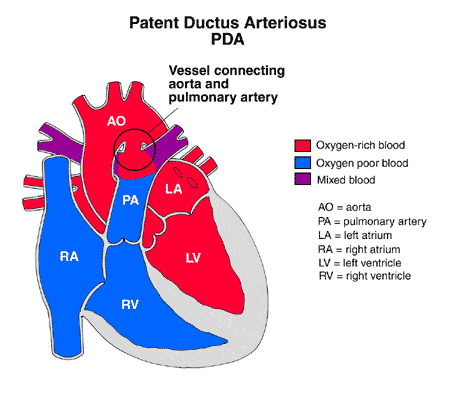
Before a baby is born, they receive oxygen from the mother through the placenta. Because of this, their lungs aren’t used. Fetuses have a temporary connection between the pulmonary artery and the aorta called the ductus arteriosus. This lets oxygen-rich (red) blood to go to the body without first going to the lungs.
At birth, when the umbilical cord is cut and your baby takes the first breath, the lungs must now provide oxygen. Blood vessels in the lungs open and blood begins to flow through. This normally leads to the closure of the ductus arteriosus within the first few days or weeks (typically by 72 hours after birth). In some babies, this connection remains open. Patent ductus arteriosus (PDA) lets oxygen-rich (red) blood to pass back through the blood vessels in the lungs.




